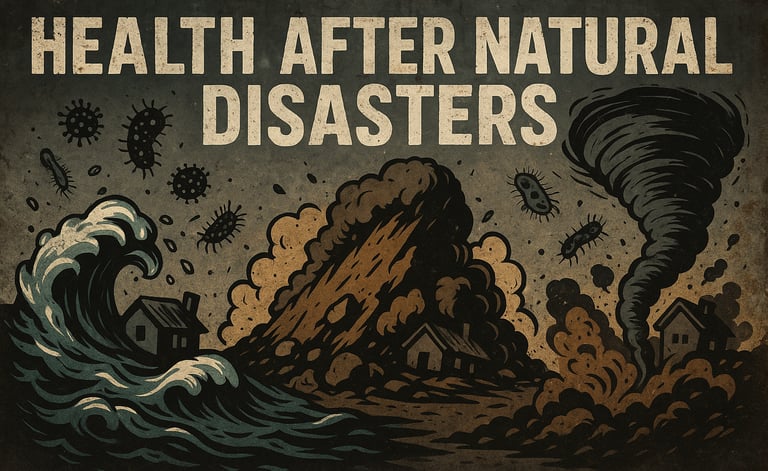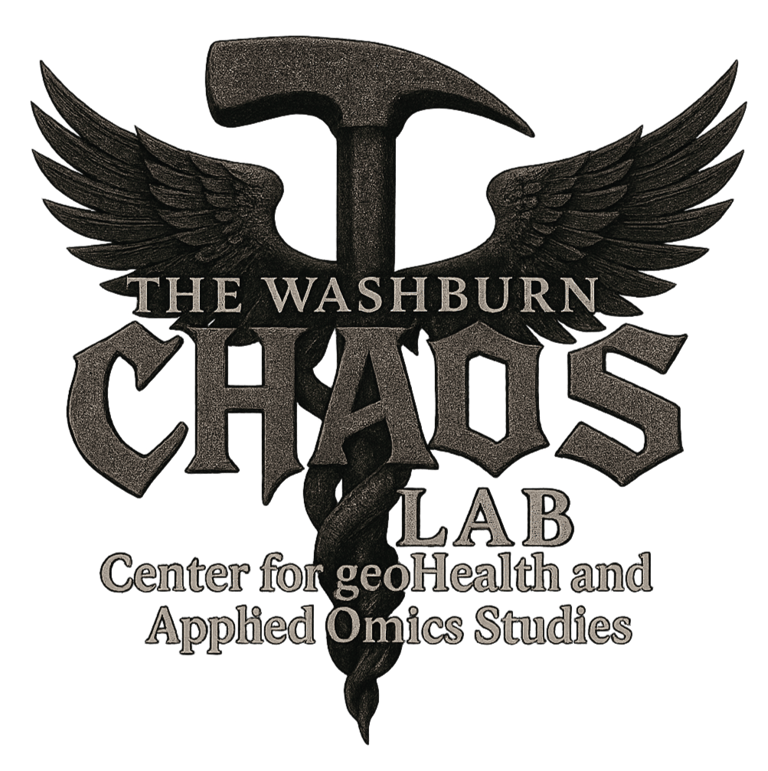Health After the Fallout: Cornerstones of CHAOS
Natural disasters don’t end when the storm does—they kick off a cascade of microbial, physical, and mental health threats that can linger for years. From flood-borne Vibrio and Legionella to tornado-triggered flesh-eating fungi and long-term mold exposure, the microbial aftermath is real, under-researched, and hitting the most vulnerable communities hardest. At CHAOS Lab, we’re tracking that fallout—mapping the wreckage, culturing the chaos, and fighting for science that doesn’t stop at the headlines.
CORNERSTONE OF CHAOSNATURAL DISASTERSRESEARCH FEATURE
6/9/20252 min read
When the storm passes, the science begins.
Natural disasters don’t operate on a schedule—and their damage doesn’t end when the floodwaters recede or the shaking stops. At CHAOS Lab, we view disasters not just as events, but as systems disruptors—tipping points that expose weaknesses in infrastructure, overwhelm health systems, and unleash both visible and invisible threats. That’s why one of our core research pillars—a cornerstone of CHAOS—is focused on the health impacts of natural disasters, both immediate and long-term. And spoiler alert: it’s a lot more microbial, more systemic, and more personal than people think.
🔥 The Acute Fallout: Physical & Microbial Chaos
Disasters are violent—but the microbial threats that move in afterward can be just as deadly.
Floodwaters take pathogens for a ride: sewage, industrial runoff, antibiotic-resistant bacteria. Expect skin infections, GI illness, leptospirosis, tetanus, and wound contamination.
Landslides disrupt the underground: asbestos, buried contaminants, microbial spores unleashed.
Earthquakes shred infrastructure—rupturing pipes, ruining sanitation systems, and creating pathogen hotspots in shelters and hospitals.
Radon—Kentucky’s silent killer—can spike when the subsurface shifts, turning long-term exposure into an invisible disaster.
🧬 Emerging Pathogens: Field Cases & Knowledge Gaps
Disasters leave microbial scars that last, and below are documented cases where our fear of the unseen became real:
🌊 Flood-linked gastro outbreaks: After 2014 Solomon Islands floods, over 6,000 diarrhea cases hit, with 38% testing positive for rotavirus
🧪 Leptospirosis & Vibrio vulnificus: After Hurricane Fiona in Puerto Rico, leptospirosis spiked; Hurricane Ian triggered flesh-eating Vibrio infections.
🍄 Mold in flood-damaged homes: Post-Katrina, Rita, Sandy—Aspergillus and Penicillium colonized homes, driving chronic respiratory problems.
🚰 Legionella blast in Michigan: July 2021 saw a 569% spike in Legionnaires’ after flooding and stagnant water activation post-pandemic closures.
🌪️ Joplin tornado & soil-borne mucormycosis: The 2011 EF5 tornado in Joplin, MO resulted in 13 cases of Apophysomyces trapeziformis infections from debris‑embedded wounds—five people died.
🌍 Aftershock infections: Earthquakes (e.g., 1999 Marmara, Izmit, 2011 Tohoku) saw surges in pneumonia, diarrheal disease, wound sepsis, and bloodstream infections due to crowded shelters and broken sanitation
🧠 The Mental & Community Health Undercurrent
Then there’s the weight you can’t culture:
Trauma, grief, anxiety, depression—particularly PTSD in children and first responders.
Substance use spikes.
Community trust erodes, public health disconnects.
Chronic stress undermines recovery, impacting treatment outcomes and social cohesion.
🧭 So What Now?
This is why CHAOS Lab exists—melding microbiology, geology, public health, and community science to ask the hard questions:
What microbes emerge after disasters, and how do they evolve?
What are the long-term health consequences we’re still not tracking?
How do we fortify infrastructure and communities before the next landslide, flood, or quake?
Who is still left out of research, recovery, and prevention?
We don’t chase headlines. We chase what’s next—with data, field boots, and feral science. Because disaster science isn’t just about understanding catastrophe. It’s about refusing to accept that you pick up the pieces later. Let’s map the wreckage. Let’s culture the chaos. Let’s rebuild stronger.


The storm ends. The fallout begins.
